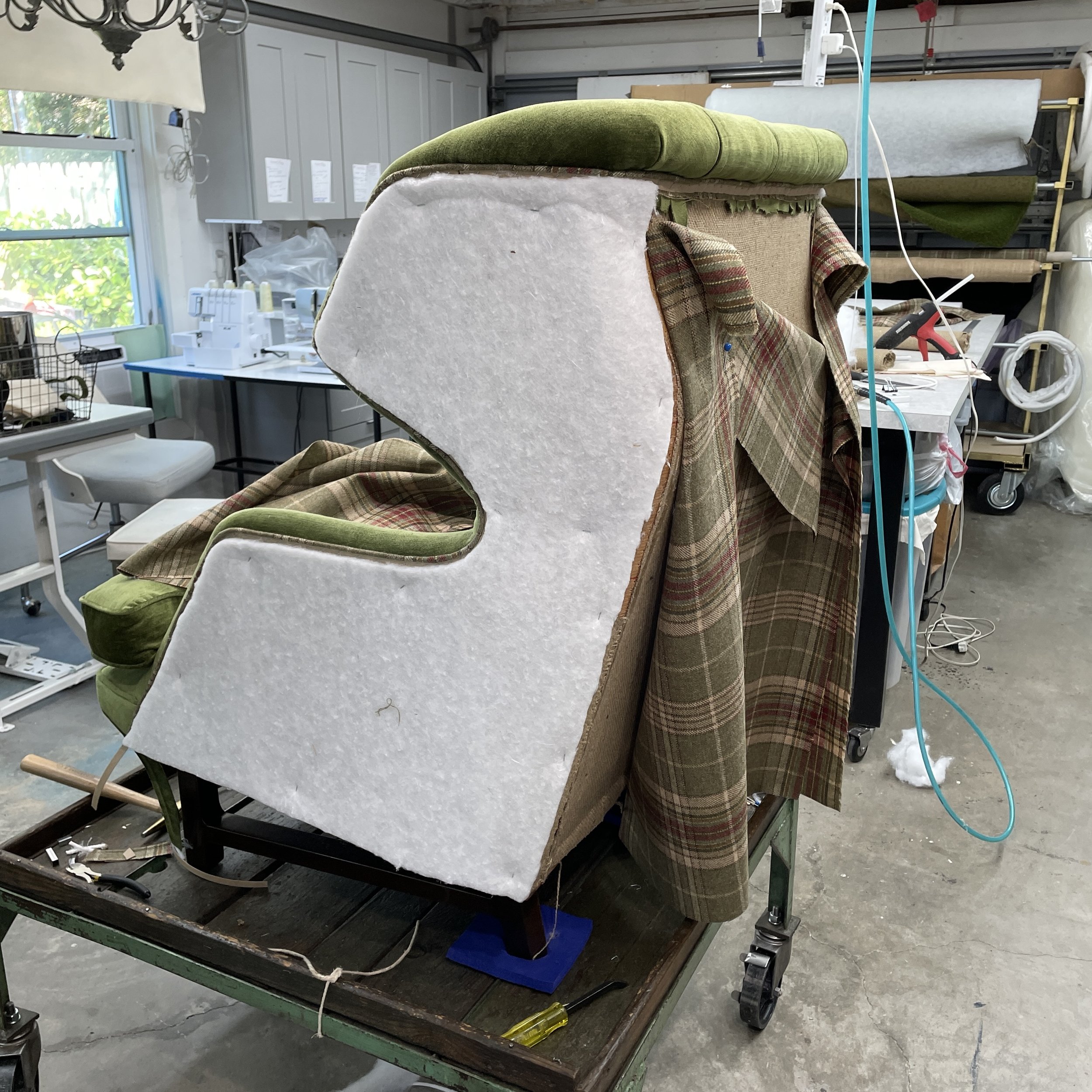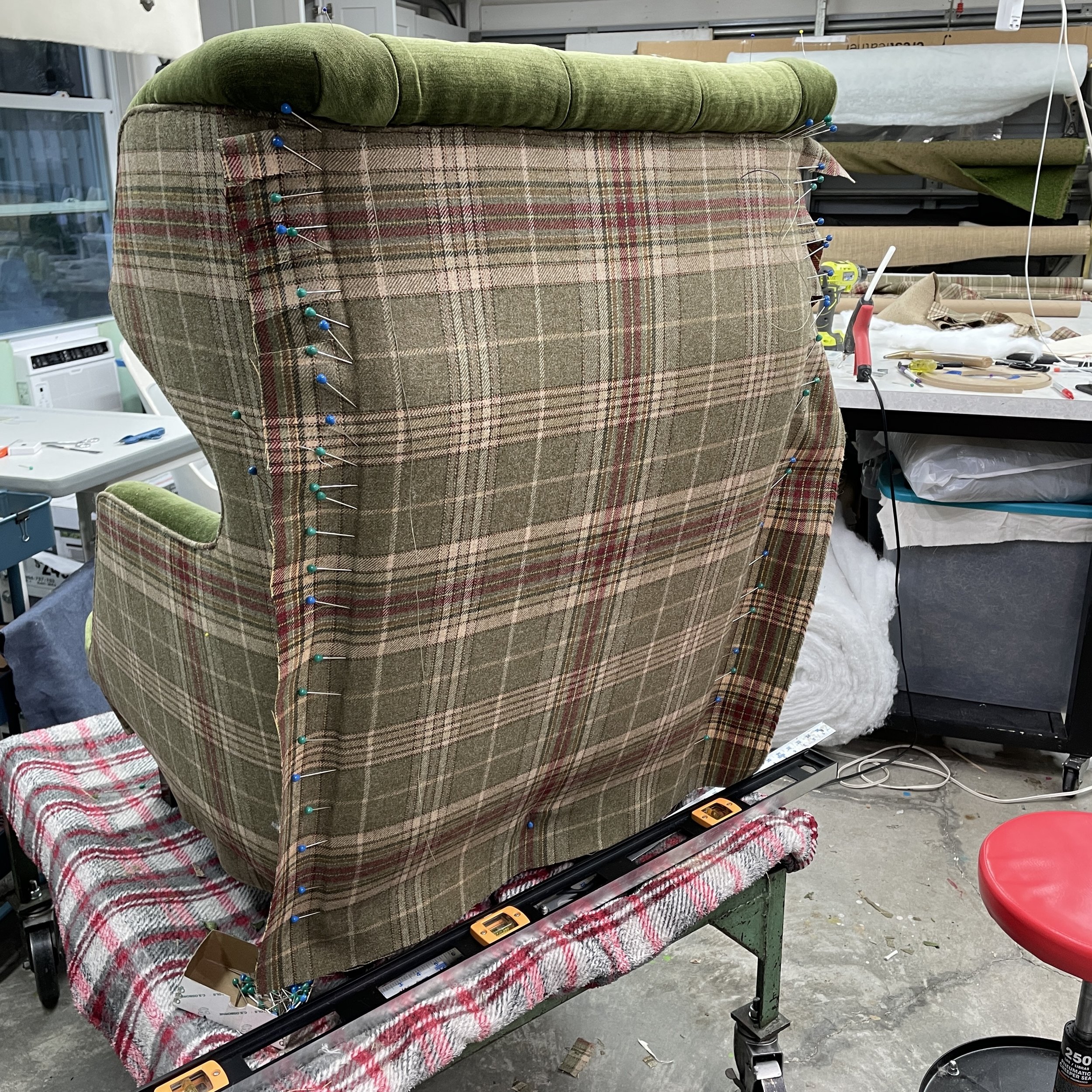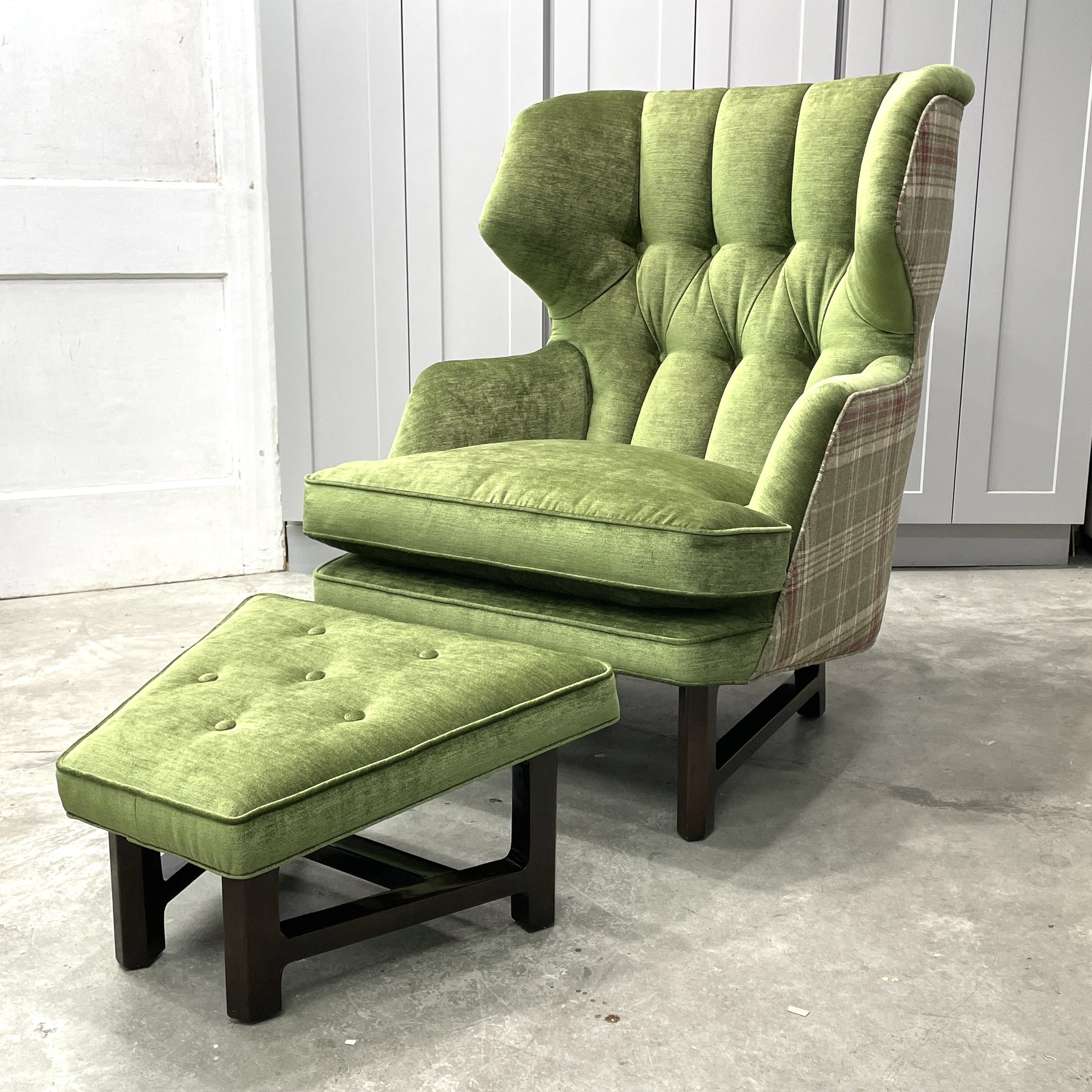Upholstering A Most Intriguing Wing Chair: Dunbar's Edward Wormley Janus Design
From time to time, I am tasked to reupholster a particularly noteworthy piece. These wing chairs with footstools came to me for restoration from a very discerning collector of fine vintage furniture. He acquired these highly desirable chairs in almost original condition; the only thing changed on them since the 1950’s was the top fabric. When I stripped them down to their bones, I found that the solid hardwood frames were like a work of sculpted art!
These wonderful wing chairs have frames like sculptures!
Designed in 1957 for the Janus line by Edward Wormley for Dunbar, they are particularly comfortable and extremely well made; the hardwood frames are carved into the appropriate curves and ledges to support the body. The upholstery is designed to encompass these curves—note the way the wing stuffing continues down into the lumbar area, and the top outside back of the frame is carved to support the padding in a shapely way. The upper inside back is indented a bit where the buttons are to give one’s neck and head support above it, causing a very appealing hunch on the outside back. Although there are coiled springs in the deck that I tied to a 4-inch height, that’s not obvious from the front rail, which tapers to about two inches. I can really appreciate the design features of a good chair when it is naked! Because these chairs are costly and very collectible, I needed to be true to the original upholstery design. This took a bit of research to make sure my measurements, button placements, padding thicknesses, pleats, and welting were all positioned correctly. Upholstering pieces in muslin first, as in the photo, allows me to make important adjustments before I put the final fabric on.
Challenges were abundant in this project! The original latex foam rubber had shrunk, becoming hard and crumbly, making discerning the thicknesses of the different areas of padding quite difficult. To properly define and plump the tufting because of the indented area, and avoid strain on the actual button twine, it was necessary to thread a sturdy double twine through the cover fabric, pull it tightly through each foam button hole, secure it with a slip knot, and attach it to the webbing in the back, which is in turn anchored to the horizontal bar defining the hunch in the outside back. The buttons were threaded in later. These chairs have a comfort factor you don’t normally see except in quality vintage furniture—lumbar springs. These are six coiled springs of a lighter gauge tied together in the lower back region. They plump and give resilience to the lower back area the way foam alone cannot.
Sixty-year-old latex foam rubber is not very appealing!
Lumbar springs encased and stitched to burlap. Arms and deck are ready for cover.
I like to make a mock-up of my cushion cover first, in muslin, to assure the fit.
Lumbar springs under the foam for comfort.
Padding the sides and fitting the outside fabric to place the pattern.
Sides hand stitched; fitting the back for turning and stitching to the welting all around.
The finished chair! I hope I did Mr. Wormley justice to his design!
Just any foam cushion would not do for this chair. A foam core with a feather/down envelope makes the Janus wing chair one you just don’t want to get out of. Plump and comfy again, with its soft chenille fabric, it should provide many more years of satisfaction for my client.
Restoring noteable and uncommon vintage and antique seating pieces to their original glory is what I love to do. Feel free to contact me should you have one or two you’d like me to restore. Let me make you a chair!








